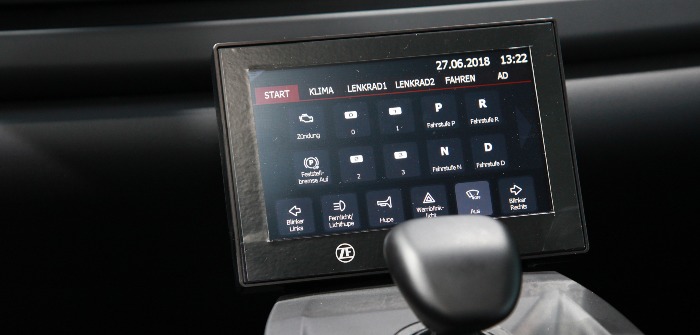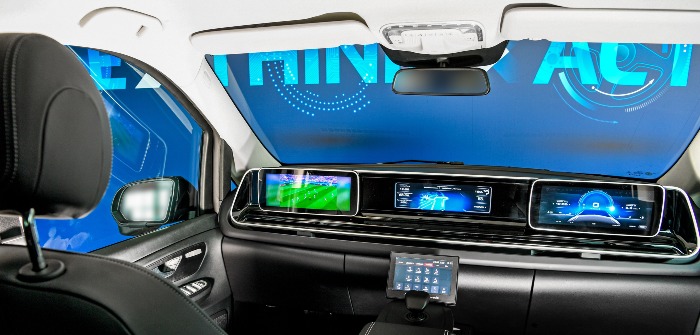It is predicted that, in Germany, parcel delivery companies will process more than four billion packages to customers each year by 2021. With much of the cargo being transported by road, German company ZF has developed a revolutionary cockpit of the future that could be applied to fully automated delivery trucks, with the aim to enable operators to increase their productivity levels.
The Trendsetting Cockpit interactive display prototype that ZF has created with French supplier Faurecia comes with no steering wheel and no pedals. Instead, those functions are handled by actuators controlled by the vehicle’s artificially intelligent central computer. The cockpit is equipped with three displays on the dash and a joystick, which the driver would only need to take control of in non-geo-fenced areas. Within these virtual perimeters, ZF believes that a vehicle using its cockpit of the future would perform as a Level 4 self-driving vehicle with its sensors detecting geo-fenced zones in real time via a GPS signal.

For Dr Steffen Jung, a project manager in ZF’s Advanced Development division, it is the removal of these conventional operating elements that holds the key to the logistics fleets realizing even greater efficiencies.
“Without the need for a steering wheel or pedals, light commercial vehicle makers will be able to reimagine how that extra space is utilized and therefore reconfigure the interior so that when the vehicle is on autopilot, the cab also becomes the driver’s office,” says Jung.
“We see commercial vehicle drivers using the extra cabin space to plan their delivery routes, complete proof of deliveries and to send invoices while using one of the three screens from a seat, which not only conforms to vehicle safety regulations, but is also ergonomically suited to the task at hand.”
Take a seat
Dr Jung, who has worked on e-mobility and autonomous driving for the past five years, explains that this groundbreaking, steering-wheel-free technology and free seating system could reduce complexity for OEMs and for large logistics operators whose pan-European delivery routes encompass both the UK and mainland Europe, which drive on opposite sides of the road.
“Auto makers would no longer have to produce vehicles solely for markets that drive on a particular side of the road, which, potentially, could lead to large savings. As the control lever is positioned in the center of the vehicle, when driving manually the driver could simply switch seats, making it easier to negotiate when driving on the other side of the road.”
Finally, Dr Jung, who worked on developing transmission concepts before deciding to specialize in innovation vehicle technology, believes that the benefits of the cockpit of the future extend way beyond the freight and logistics sectors.
“The cockpit could be utilized heavily in the Mobility as a Service sector. Pioneering robot taxi firms, for example, could take advantage of the technology. Again, the cockpit enables automotive interior designers to make the most of the newly found space. Passengers could surf the web or use the space as a working hub. For longer journeys, and for larger taxis, it might also be possible to reconfigure the seats to provide a sleeping cabin. However, as the seatbelt configuration would need to be redesigned, this very much depends on any new design meeting stringent safety standards.”
by James Gordon


